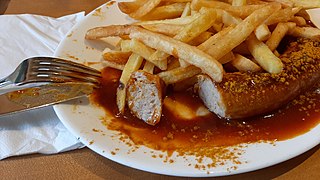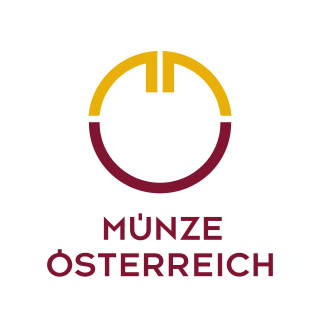German euro coins have three separate designs for the three series of coins. The 1-cent, 2-cent and 5-cent coins were designed by Rolf Lederbogen, the design for the 10-cent, 20-cent and 50-cent coins were designed by Reinhard Heinsdorff and the 1- and 2-euro coins were done by Heinz Hoyer and Sneschana Russewa-Hoyer. Featured in all designs are the 12 stars of the EU and the year of minting.
Schwäbisch Hall is a Landkreis (district) in the northeast of Baden-Württemberg, Germany. Neighboring districts are Main-Tauber, the Bavarian district Ansbach, Ostalbkreis, Rems-Murr, and Hohenlohe.

A constitutional court is a high court that deals primarily with constitutional law. Its main authority is to rule on whether laws that are challenged are in fact unconstitutional, i.e. whether they conflict with constitutionally established rules, rights, and freedoms, among other things.

Ludwigsburg Palace, nicknamed the "Versailles of Swabia", is a 452-room palace complex of 18 buildings located in Ludwigsburg, Baden-Württemberg, Germany. Its total area, including the gardens, is 32 ha – the largest palatial estate in the country. The palace has four wings: the northern wing, the Alter Hauptbau, is the oldest and was used as a ducal residence; the east and west wings were used for court purposes and housing guests and courtiers; the southern wing, the Neuer Hauptbau, was built to house more court functions and was later used as a residence.

Currywurst is a fast food dish of German origin consisting of steamed, fried sausage, usually pork, typically cut into bite-sized chunks and seasoned with curry ketchup, a sauce based on spiced ketchup or tomato paste topped with curry powder, or a ready-made ketchup seasoned with curry and other spices. The dish is often served with french fries.

Maulbronn Monastery is a former Cistercian abbey and ecclesiastical state in the Holy Roman Empire located at Maulbronn, Baden-Württemberg. The monastery complex, one of the best-preserved in Europe, was named a UNESCO World Heritage Site in 1993.

The Comburg is a former Benedictine monastery near Schwäbisch Hall, Germany.

The State Museum of Natural History Stuttgart, abbreviated SMNS, is one of the two state of Baden-Württemberg's natural history museums. Together with the State Museum of Natural History Karlsruhe it is one of the most important repositories for state-owned natural history collections.

The Austrian Mint is located in Vienna and is responsible for minting Austrian coins. Since 1989 it has been a public limited company (Aktiengesellschaft) and a subsidiary of Austria's central bank Oesterreichische Nationalbank, which also has its headquarters in Vienna.
Carl Vezerfi-Clemm was a German sculptor, medalist and coin designer. He made commemorative coins issued by the Federal Republic of Germany, medals, sculptures and other creations.
The Staatliche Münzen Baden-Württemberg (SMBW) is a coin mint in Germany, producing coins of the euro currency.

The Staatliche Münze Berlin (SMB) is a European coin mint located in the city of Berlin. It is one of the four German coin mints, the others being the Staatliche Münzen Baden-Württemberg, the Bavarian State Mint, and the Hamburgische Münze. The SMB produces a fifth of all German coins.
The Hamburgische Münze is a European coin mint located in the city of Hamburg. It is one of the four German coin mints, the others being the Staatliche Münzen Baden-Württemberg, the Bavarian State Mint, and the Staatliche Münze Berlin.

The Sachsenpfennig, sometimes called the Wendenpfennig or the Hochrandpfennig, was a well-known coin of the pfennig type minted in the eastern part of the Stem Duchy of Saxony during the 10th and 11th centuries. It had an upturned perimeter and, next to the Otto Adelheid Pfennig was the most common pfennig type of its time. Sachsenpfennigs are the oldest coins minted in Saxony. Its different names represent a lack of clarity within mediaeval numismatics about the coin.

Mintmaster marks are often the initials of the mintmaster of a mint or small symbols for example at the size of the letters on a coin inscription to denote the coins made under his direction. With his mark, the mintmaster assumed responsibility for ensuing the coins issued by his mint were in accordance with the regulations. Mintmaster marks were used as early as the time of bracteate coinage in the Holy Roman Empire, but these can only rarely be deciphered. All mintmaster marks since the beginning of the minting of Thalers have been identified.

The Guter Groschen, also Gutergroschen or Gutegroschen, abbreviation Ggr., is name of the groschen coin that was valued at 1⁄24 of a Reichsthaler from the end of the 16th century. It was called a "good groschen" to distinguish it from the lighter Mariengroschen, which was only valued at 1⁄36 Reichsthaler. The term Guter Groschen remained common until the middle of the 19th century.
The Andreas Hofer Kreuzer, also called the Hofer Kreuzer or Sandwirtszwanziger, was the name of the 20- and 1-kreuzer coins that were minted during the Tyrolean Rebellion in Hall in Tirol in 1809. The obverse depicts the Tyrolean Eagle and the inscription Gefürstete Grafschaft Tirol; the reverse shows the nominal value.
Blaffert was the name of two different types of historical European coin. It was also called the Blafferd or, in Upper German, the Plappart, Plappert or Blaphart. It derives from the French blafard meaning "pale" or "bright".









